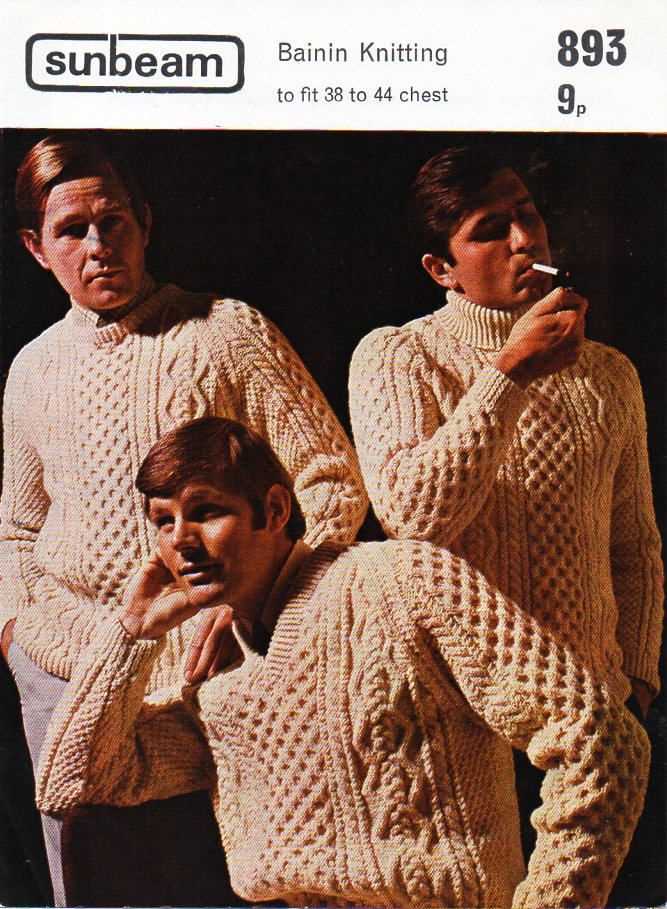
If you’re a knitting enthusiast looking for a new project, why not consider knitting an Aran jumper? Aran jumpers, also known as fisherman sweaters, are a classic and timeless wardrobe staple that originated in the Aran Islands on the west coast of Ireland. These jumpers are known for their intricate cable patterns, which not only add visual interest but also provide warmth and insulating properties.
Knitting an Aran jumper is a gratifying project that allows you to showcase your knitting skills and create a one-of-a-kind garment. Whether you’re a beginner or an experienced knitter, there are plenty of Aran jumper knitting patterns available to suit all skill levels. From simple cable patterns to more intricate designs, you can choose a pattern that reflects your style and level of expertise.
Not only are Aran jumpers fashionable and trendy, but they are also incredibly versatile. They can be dressed up or down, making them the perfect addition to any outfit. Whether you pair it with jeans for a casual everyday look or style it with a skirt and heels for a more polished ensemble, an Aran jumper adds a touch of elegance and sophistication to any wardrobe.
In this article, we will explore the history of Aran jumpers, the different knitting patterns available, and provide tips and tricks for successfully knitting your own Aran jumper. Get ready to unleash your creativity and cozy up in a handmade masterpiece!
How to choose the right Aran jumper knitting pattern for you?
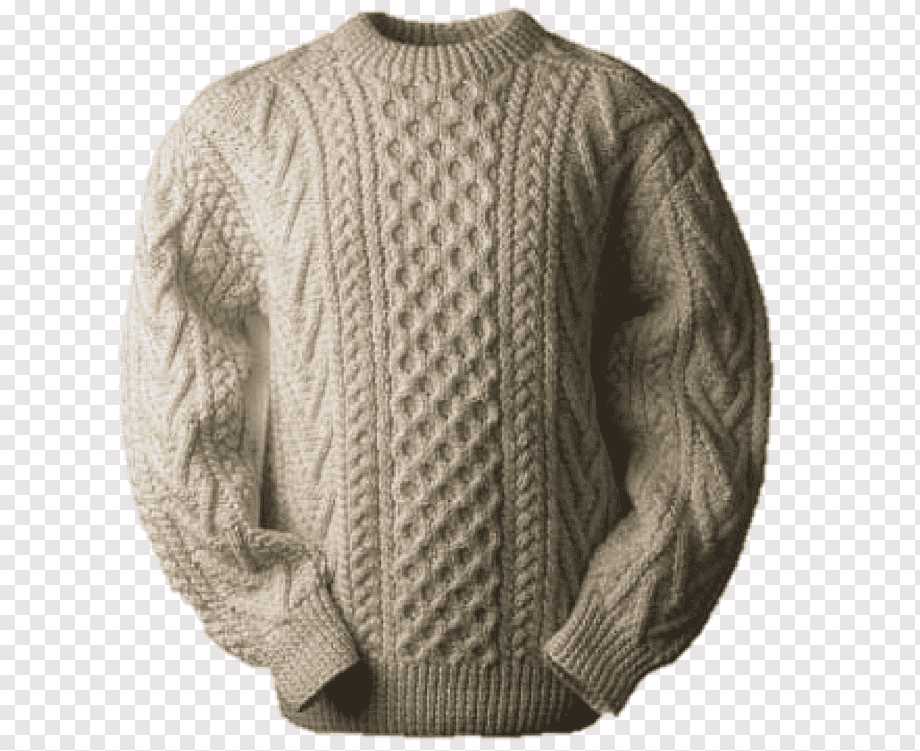
When it comes to choosing the right Aran jumper knitting pattern, there are several factors to consider. These include your skill level, personal style, and the type of yarn you prefer to work with. By taking these factors into account, you can find a pattern that not only suits your knitting abilities but also creates a garment that reflects your individual taste.
Skill level: When selecting an Aran jumper knitting pattern, it’s important to consider your skill level. If you’re a beginner, it’s best to choose a pattern that is labeled as “easy” or “beginner-friendly.” These patterns typically have clear instructions and use basic stitches, making them easier to follow. Intermediate and advanced knitters can opt for more complex patterns that involve intricate cables and stitch patterns.
Personal style: Another important factor in choosing the right Aran jumper knitting pattern is your personal style. Consider the type of garment you prefer to wear and the style of Aran jumper that appeals to you. Are you drawn to traditional, timeless designs, or do you prefer more modern and fashionable interpretations? Look for patterns that align with your style preferences to ensure you’ll be happy with the finished product.
Yarn preference: The type of yarn you choose can greatly impact the look and feel of your Aran jumper. Some knitters prefer working with natural fibers such as wool or alpaca, while others prefer synthetic blends for their durability and easy care. Consider the yarn weight as well, as it will determine the thickness and warmth of the finished garment. Make sure to select a pattern that specifies the type and weight of yarn recommended to achieve the desired results.
In conclusion, choosing the right Aran jumper knitting pattern involves considering your skill level, personal style, and yarn preference. By finding a pattern that aligns with these factors, you can ensure a successful and enjoyable knitting project that results in a beautiful Aran jumper that reflects your individuality.
Factors to consider when selecting an Aran jumper knitting pattern
When it comes to selecting an Aran jumper knitting pattern, there are several factors to consider that can help ensure a successful and enjoyable knitting experience. From the complexity of the pattern to the size and fit, each factor plays a crucial role in determining the final outcome of the project.
1. Skill level: Before choosing a knitting pattern, it’s important to assess your skill level. Aran jumper patterns can vary in terms of difficulty, with some featuring intricate cable designs and advanced techniques. Beginners may want to start with a simpler pattern that focuses on basic stitches and minimal embellishments.
2. Pattern size: Aran jumpers come in a range of sizes, so it’s essential to select a pattern that matches your desired measurements. Some patterns offer different sizing options, while others may require adjustments to achieve the perfect fit. Taking accurate measurements and consulting the pattern’s size guide will help ensure a well-fitting jumper.
3. Style and design: Aran jumpers are known for their distinctive cable patterns and textured designs. Consider the style and design elements you prefer, whether it’s a classic traditional pattern or a more modern interpretation. Some patterns may also include additional features like ribbing, decorative stitches, or different necklines, allowing you to personalize the finished garment.
4. Yarn type and quantity: The type and quantity of yarn required for the pattern should also be taken into account. Not all patterns specify a particular yarn brand or type, so it’s important to choose a yarn that matches the suggested weight and fiber content. Additionally, carefully estimating the amount of yarn needed ensures you have enough to complete the project without running out.
5. Knitting techniques and tools: Different patterns may require specific knitting techniques and tools. Some patterns may use circular needles or double-pointed needles, while others may require the use of a cable needle or stitch markers. Reviewing the pattern instructions and checking the required tools and techniques will help you be prepared and confident in your knitting abilities.
Overall, choosing the right Aran jumper knitting pattern involves considering factors such as skill level, pattern size, style and design, yarn type and quantity, as well as the necessary knitting techniques and tools. Taking the time to carefully assess these factors ensures a successful knitting project and a beautifully crafted Aran jumper.
Traditional Aran patterns vs. modern variations
The Aran jumper, also known as the fisherman sweater, is a traditional Irish knitwear that has gained popularity worldwide. These jumpers are known for their intricate cable and diamond patterns, which were traditionally used to identify different families and regions in Ireland. The traditional Aran patterns are rich in symbolism and heritage, reflecting the rugged nature and maritime traditions of the Irish people.
While the traditional Aran patterns continue to be cherished and passed down through generations, modern variations have also emerged to cater to the changing tastes and trends. These modern variations still incorporate the classic cable and diamond patterns, but they often add contemporary twists, such as different color combinations, asymmetrical designs, or even incorporating other stitch patterns.
Color: In traditional Aran patterns, natural colors such as creamy white, beige, and charcoal grey dominate. However, modern variations embrace a wider range of colors, including vibrant shades like red, blue, and green. This allows knitters to personalize their Aran jumpers to suit their individual style and preferences.
Stitch patterns: Traditional Aran patterns heavily rely on cable and diamond stitches, which symbolize different aspects of Irish life, such as good luck, prosperity, and safety at sea. Modern variations, while still incorporating these traditional stitches, introduce other stitch patterns like ribbing, lace, or even modern geometric designs to create a unique and contemporary look.
- Asymmetry: One common modern variation is asymmetrical design. This involves placing the cable and diamond patterns off-center or incorporating them into only one side of the jumper, creating a visually striking and modern aesthetic.
- Texture: Modern Aran jumpers often focus on texture, using different stitch patterns to create a three-dimensional effect. This adds depth and interest to the knitwear, making it more visually appealing.
- Cropped length: Another modern variation is the cropped length. While traditional Aran jumpers are typically long and oversized, modern variations sometimes feature a shorter length, creating a more fitted and fashionable look.
In conclusion, while the traditional Aran patterns hold great cultural and historical significance, modern variations have allowed this iconic knitwear to evolve and stay relevant in the ever-changing fashion landscape. Whether you prefer the timeless charm of the traditional patterns or the contemporary twists of modern variations, the Aran jumper remains a beloved and versatile piece of knitwear.
Tips and Tricks for Beginners: Knitting Your First Aran Jumper
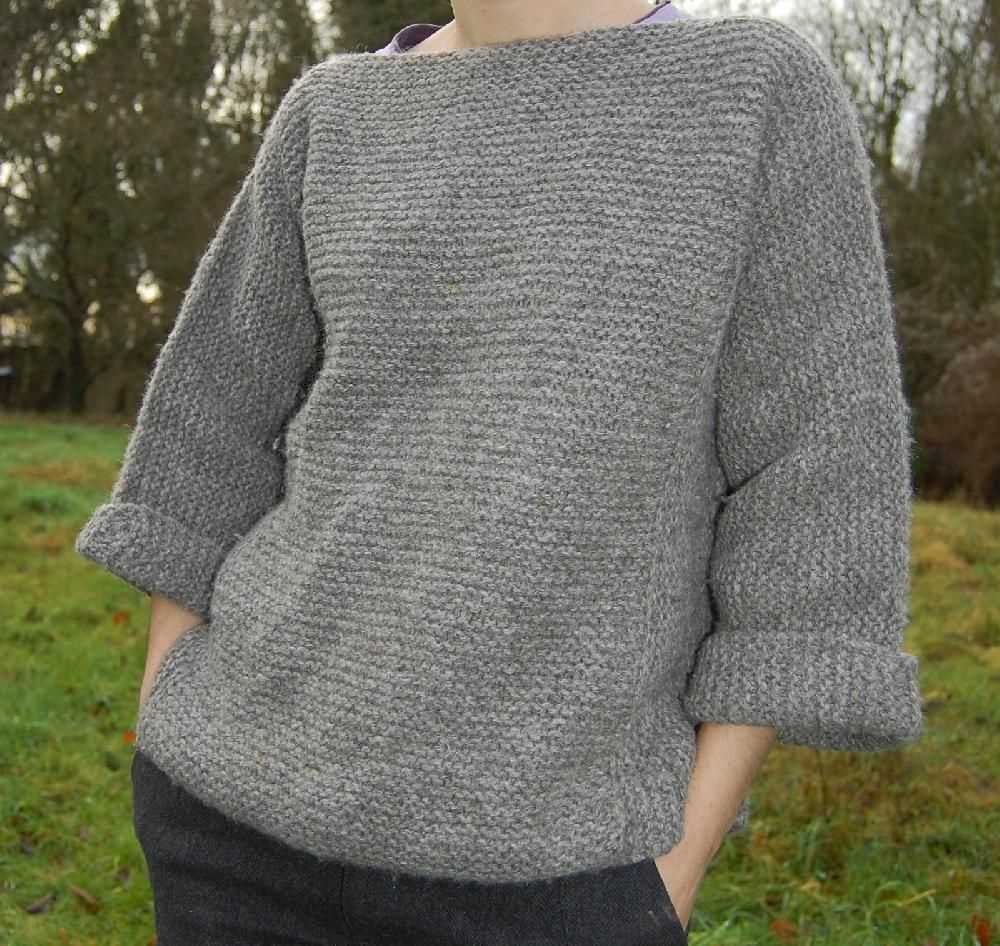
Knitting your first Aran jumper can be an exciting and rewarding project. However, for beginners, it can also seem overwhelming. With the complex patterns and intricate stitches involved, it is important to approach the task with patience and a willingness to learn. Here are some helpful tips and tricks to guide you through the process:
1. Start with a Simple Pattern
When knitting your first Aran jumper, it is best to start with a simple pattern. Look for a design that incorporates basic stitches such as knit, purl, and cables. Starting with a simpler pattern will allow you to practice these key techniques before moving on to more complex designs.
2. Choose the Right Yarn and Needles
Choosing the right yarn and needles is crucial for the success of your Aran jumper. For beginners, it is recommended to use a medium-weight yarn, such as worsted or aran weight, as it is easier to work with. Additionally, make sure to select the appropriate needle size for your chosen yarn to achieve the desired gauge and fit.
3. Take Time to Swatch
Before diving into your Aran jumper, take the time to knit a swatch. This small sample will help you determine if you are using the correct needle size and achieve the proper gauge. Swatching also allows you to practice the stitch patterns and ensure that you understand the instructions before starting the main project.
4. Follow the Pattern Carefully
When knitting an Aran jumper, it is important to carefully follow the pattern instructions. Take the time to read through the entire pattern before starting and make sure you understand the abbreviations and symbols used. Marking your progress on the pattern with stitch markers or highlighters can also help you keep track of your work and avoid mistakes.
5. Practice Good Tension and Evenness

Aran jumpers are known for their textured stitch patterns, and maintaining good tension and evenness in your knitting is crucial. Pay attention to your yarn tension and try to keep it consistent throughout your work. Practicing good tension will help ensure that your stitches are uniform and create a professional-looking finished garment.
Knitting your first Aran jumper may feel challenging, but with the right techniques and mindset, it can also be a rewarding experience. Remember to take your time, practice new stitches, and don’t be afraid to ask for help when needed. With patience and perseverance, you will soon create a beautiful and cozy Aran jumper to be proud of.
Step-by-step guide for beginners to start knitting an Aran jumper
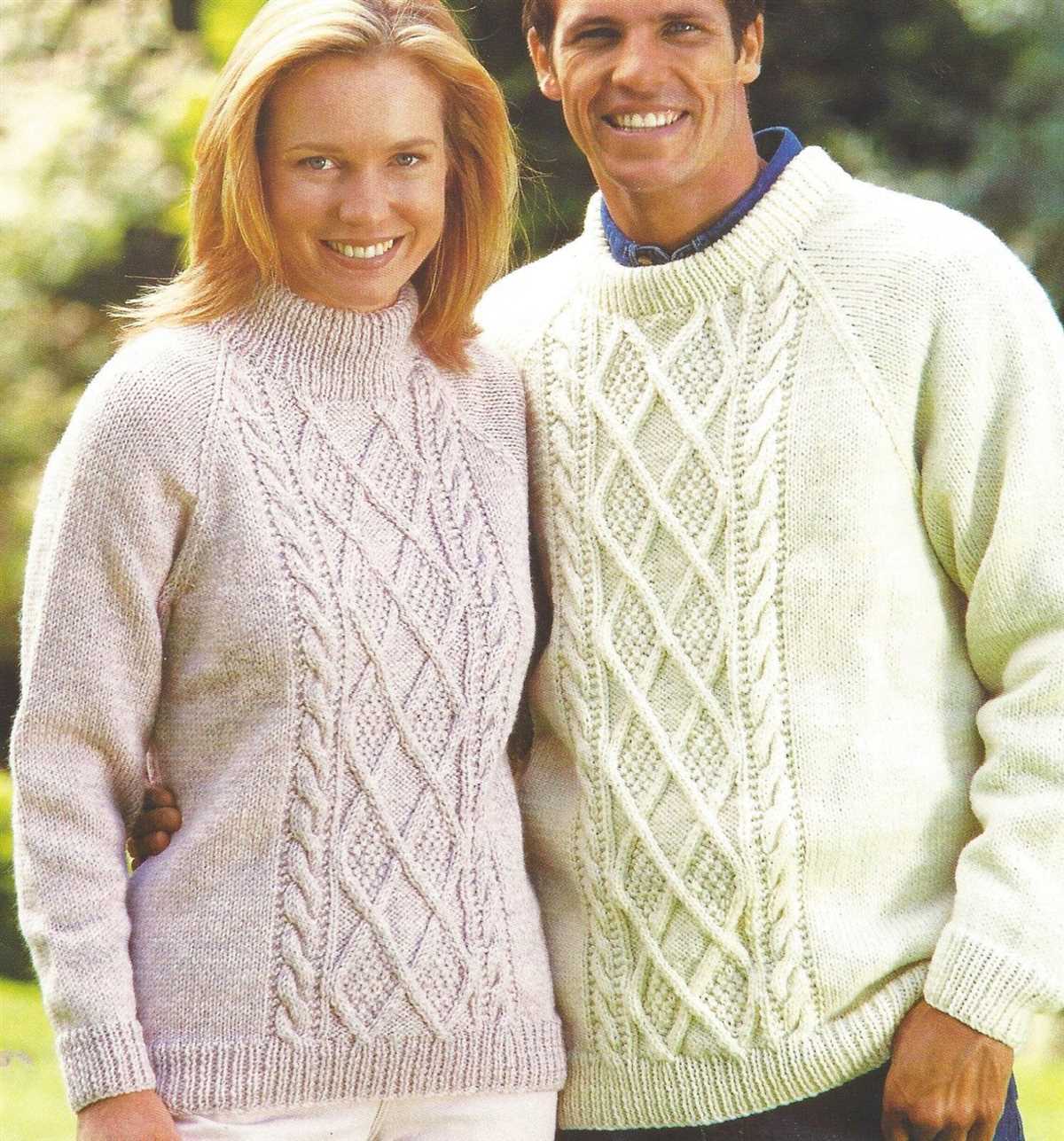
Knitting an Aran jumper can be a fun and rewarding project for beginners. The intricate patterns and cozy texture make it a staple in any winter wardrobe. If you’re new to knitting and want to start your journey with an Aran jumper, here’s a step-by-step guide to get you started.
1. Choose the right materials
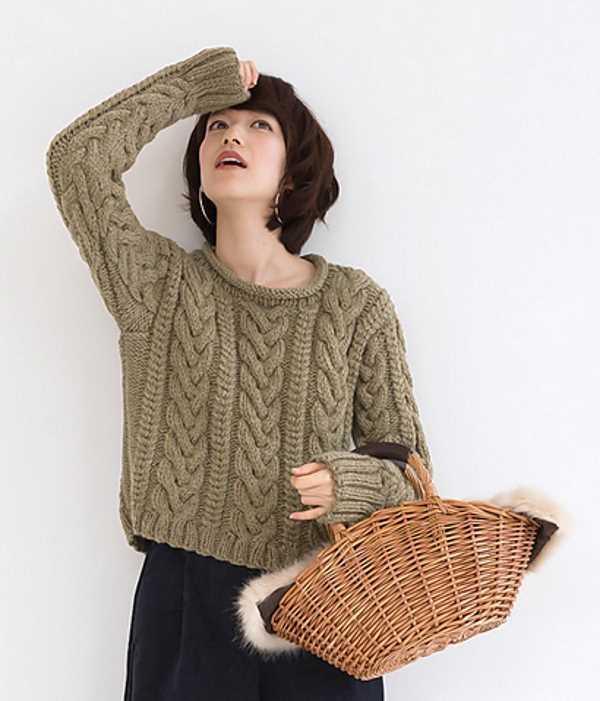
When knitting an Aran jumper, it’s important to use the right materials to achieve the desired results. Look for high-quality, natural fibers like wool or blends that offer warmth and durability. Also, make sure to choose knitting needles and a cable needle that are suitable for the yarn weight you’ve chosen.
2. Find a pattern
Next, find a suitable Aran jumper knitting pattern that suits your skill level. Look for beginner-friendly patterns that provide detailed instructions and clear diagrams. Be sure to read through the pattern and familiarize yourself with the terminology and techniques used.
3. Practice basic stitches
Before diving into the Aran jumper pattern, it’s essential to practice and master basic knitting stitches. Start by learning how to cast on, knit, purl, and bind off. These stitches will form the foundation of your project and help you understand the pattern better. You can find numerous online tutorials and videos that demonstrate these stitches.
4. Swatch and gauge
Knitting a swatch is a crucial step in ensuring your Aran jumper fits properly. Follow the pattern’s instructions to knit a small sample of the pattern stitch using the chosen yarn and needles. Measure the number of stitches and rows per inch using a gauge ruler. Adjust your needle size if necessary to match the gauge specified in the pattern.
5. Start knitting the jumper
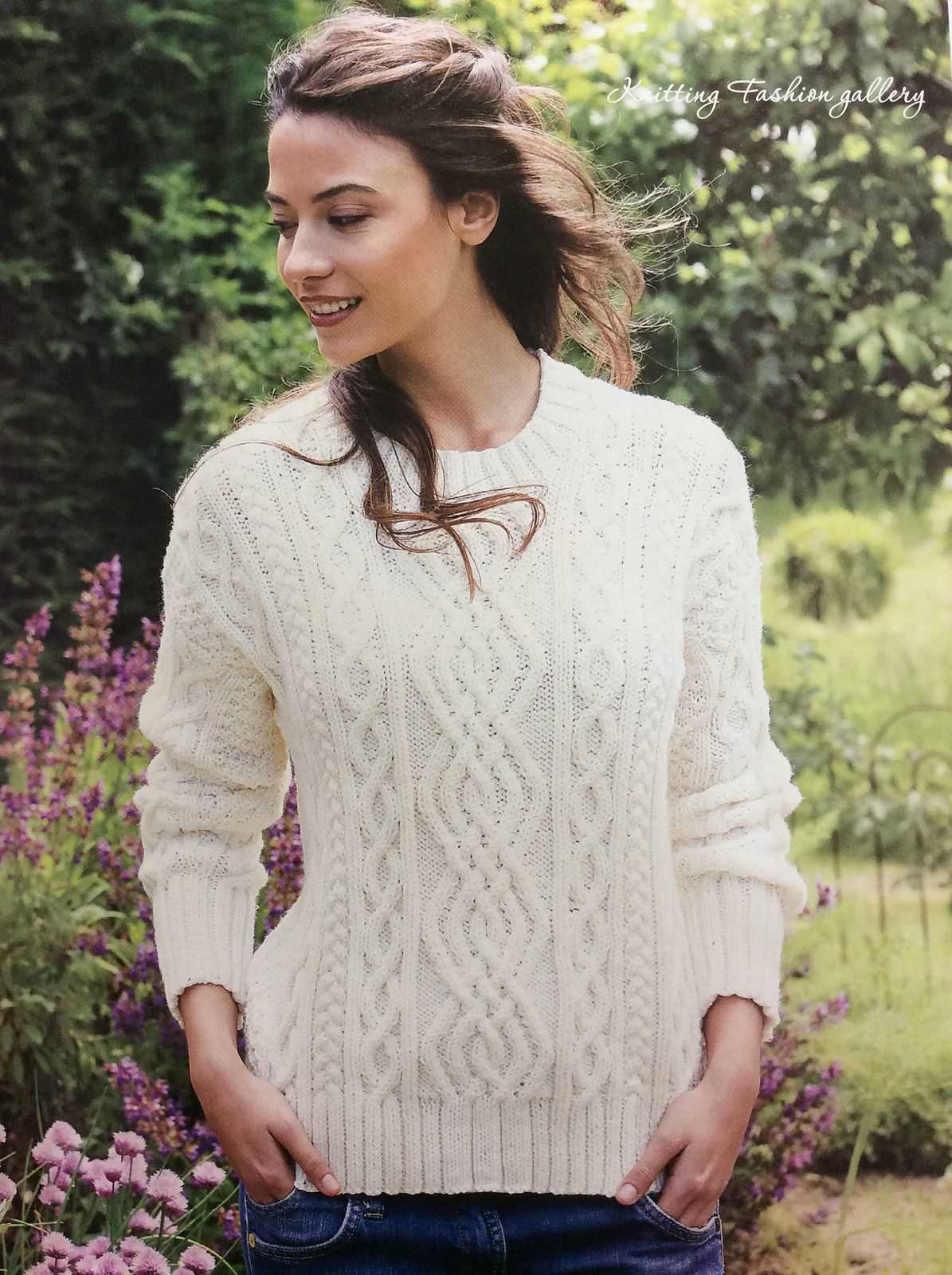
Now that you have the materials, pattern, and necessary skills, it’s time to start knitting your Aran jumper. Begin by casting on the required number of stitches and follow the pattern step-by-step. Pay attention to any specific stitch patterns or cable instructions and take your time to ensure accuracy.
As you progress, keep track of your rows to ensure the correct length and make any necessary adjustments according to the pattern. Don’t be discouraged if it takes time to complete the jumper – knitting is a relaxing and meditative process that requires patience and practice.
Finally, once you’ve completed the knitting part, follow the pattern’s instructions for finishing touches such as sewing in ends and blocking the jumper to give it a professional and polished look. With time and practice, you’ll soon have a beautiful Aran jumper to wear and proudly showcase your knitting skills.
Challenge yourself with intricate stitches and complex designs
Are you ready to take your knitting skills to the next level? If so, it’s time to challenge yourself with intricate stitches and complex designs. These Aran jumper knitting patterns offer the perfect opportunity to push your knitting abilities to new heights.
One of the most exciting aspects of knitting an Aran jumper is the intricate stitches that are involved. From beautiful cables to delicate lace patterns, these designs are sure to capture your attention and keep you engaged throughout the knitting process. The intricate stitches in Aran jumpers not only add visual interest but also create a unique texture that is both cozy and stylish.
While some may find intricate stitches intimidating, they are actually a great way to expand your knitting skills. By working on complex designs, you can learn new techniques and improve your stitch vocabulary. Whether it’s mastering a new cable pattern or tackling a challenging lace stitch, each project offers an opportunity for growth and learning.
As you delve deeper into these complex designs, you’ll find that they require careful attention to detail and precise execution. This level of focus can be incredibly rewarding, as it allows you to fully immerse yourself in the knitting process and create something truly special. The sense of accomplishment that comes from completing a complex Aran jumper is unmatched, making it a truly worthwhile endeavor for any knitter.
Customizing patterns to fit various body shapes and measurements
When it comes to knitting an Aran jumper, finding the perfect fit for your body shape and measurements is essential. Fortunately, many knitting patterns can be easily customized to accommodate different sizes and body types.
One of the first steps in customizing a pattern is to determine your accurate body measurements. This includes measuring your bust, waist, hips, sleeve length, and other relevant areas. Having these measurements at hand will help you choose the right size and make necessary adjustments to the pattern.
Once you have your measurements, you can identify the proper size in the pattern and make any needed modifications. This may involve adjusting the number of stitches or rows, incorporating additional shaping for a better fit, or altering the length and width of certain sections to accommodate your unique proportions.
Another way to customize a pattern is by using different stitch patterns or stitch combinations. This can add more interest and texture to the finished Aran jumper while also allowing for adjustments in width or length. For example, if you have wider hips, you can choose a stitch pattern that provides more stretch and give in that area.
Additionally, considering the yarn weight and fiber content can also help in customizing the pattern. Different yarns have different drape and stretch, so selecting the right yarn for your body shape can ensure a flattering fit. It’s also worth noting that using a slightly larger or smaller needle size can also make a difference in the final outcome.
In conclusion, customizing Aran jumper knitting patterns to fit various body shapes and measurements is not only possible but quite common. With accurate measurements, careful pattern selection, and thoughtful modifications, you can create a sweater that fits you perfectly and showcases your unique style.
Understanding the importance of yarn choice in Aran jumper knitting
When it comes to knitting an Aran jumper, the choice of yarn plays a crucial role in determining the final outcome of the project. Aran jumpers are known for their intricate cable and textured patterns, and the right yarn can enhance these features, making the jumper look stunning.
One key aspect to consider when choosing yarn for an Aran jumper is its composition. Traditional Aran jumpers are usually made of wool, as it has excellent insulation properties and provides warmth in cold weather. Wool also has natural elasticity, allowing the jumper to stretch and retain its shape over time. Additionally, wool yarn gives the jumper a soft and cozy feel, making it comfortable to wear.
Another important factor to consider is the weight of the yarn. Aran jumpers are typically knit with medium to heavy-weight yarns, as they help create the desirable thickness and structure of the garment. Using a lighter weight yarn may result in a jumper that feels too thin and lacks the desired warmth. On the other hand, using a heavier weight yarn may make the jumper bulky and less comfortable to wear.
The color of the yarn is also a significant consideration. Traditional Aran jumpers are often knit in natural, earthy tones such as cream, gray, and brown. These colors not only reflect the historical origins of Aran knitting but also highlight the intricate cable patterns. However, modern variations of Aran jumpers offer a wider range of colors, allowing knitters to express their personal style.
Lastly, the quality of the yarn should not be overlooked. Using high-quality yarn will not only improve the overall look and feel of the jumper but also ensure its durability. A well-made Aran jumper will last for years, becoming a cherished wardrobe staple.
Choosing the right yarn for your Aran jumper to achieve desired results
When it comes to knitting an Aran jumper, choosing the right yarn is crucial to achieve the desired results. Aran jumpers are known for their intricate cable patterns and textured stitches, so selecting a yarn that will highlight these features is important.
The first consideration when choosing yarn for an Aran jumper is the fiber content. Traditional Aran jumpers are typically made from wool, as it provides warmth, durability, and excellent stitch definition. However, there are other options available such as blends of wool and alpaca or wool and acrylic, which can offer added softness and ease of care.
The next factor to consider is the weight or thickness of the yarn. Aran jumpers traditionally use Aran weight yarn, which is thicker than standard knitting yarn. A thicker yarn will result in a chunkier, warmer jumper, while a lighter weight yarn will create a more delicate and lightweight finished garment. It’s important to match the yarn weight to the intended design and desired drape of the jumper.
Another important aspect to consider is the color of the yarn. Aran jumpers are often seen in natural, earthy colors such as cream, beige, and gray. These colors showcase the intricate stitch patterns and give the jumper a classic, timeless look. However, there are no hard and fast rules when it comes to color, and you can certainly experiment with brighter or more vibrant shades to add a modern twist to your Aran jumper.
Finally, it’s important to consider the quality and durability of the yarn. Aran jumpers are often labor-intensive projects that require a significant amount of time and effort. Therefore, selecting a high-quality yarn that can withstand wear and tear is essential. Look for yarns with good reviews for their strength and longevity to ensure your Aran jumper will last for years to come.
In summary, choosing the right yarn for your Aran jumper involves considering the fiber content, weight, color, and quality of the yarn. By selecting a yarn that emphasizes the intricate stitch patterns, matches the intended design, and meets your desired level of warmth and durability, you can achieve a beautiful Aran jumper that you will be proud to wear.
Adding personal touches: Embellishments and modifications for Aran jumpers
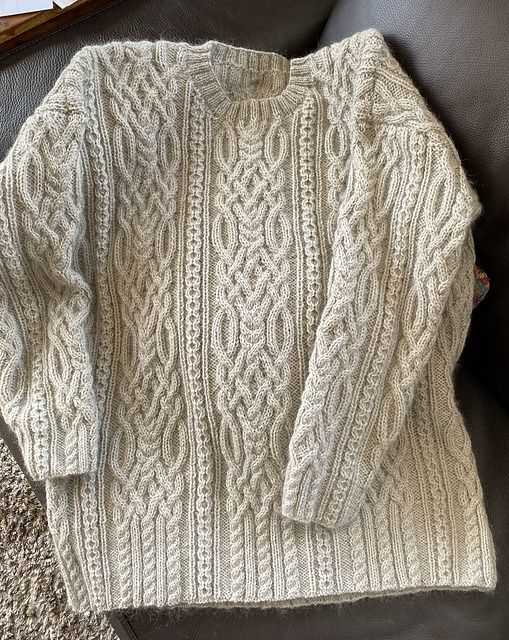
When knitting an Aran jumper, there are endless possibilities for adding personal touches and making the garment truly unique. Whether you’re an experienced knitter looking to experiment or a beginner eager to put your own spin on a classic design, here are some ideas for embellishments and modifications that can take your Aran jumper to the next level.
1. Cable variations:
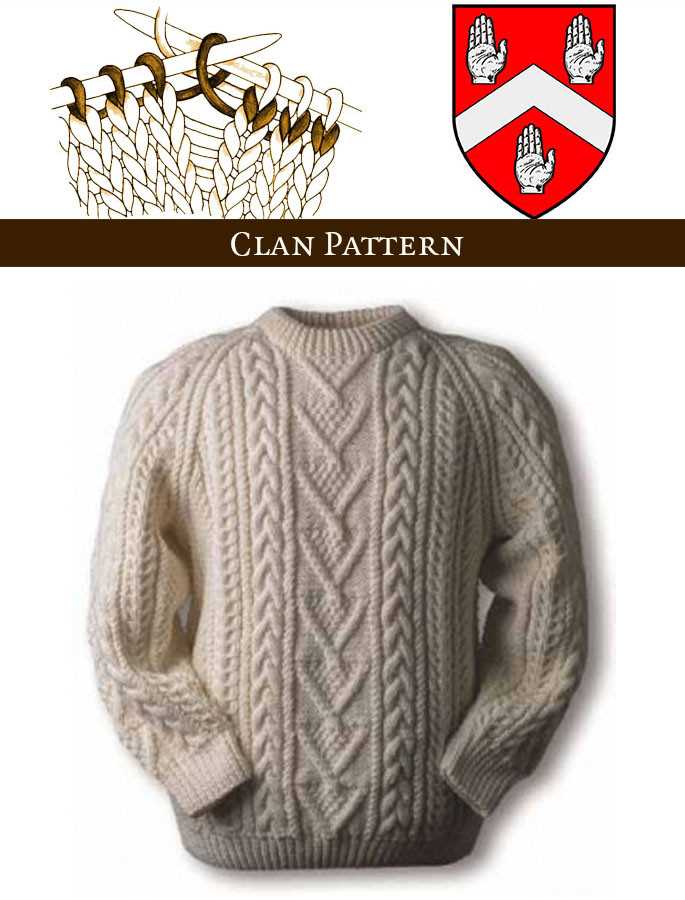
One of the defining features of the Aran jumper is its intricate cable patterns. While the traditional designs are beautiful in their own right, you can also explore different cable variations to make your jumper stand out. Try adding different types of cables, such as honeycomb or diamond patterns, or experiment with different cable sizes and placements.
2. Colorwork accents:
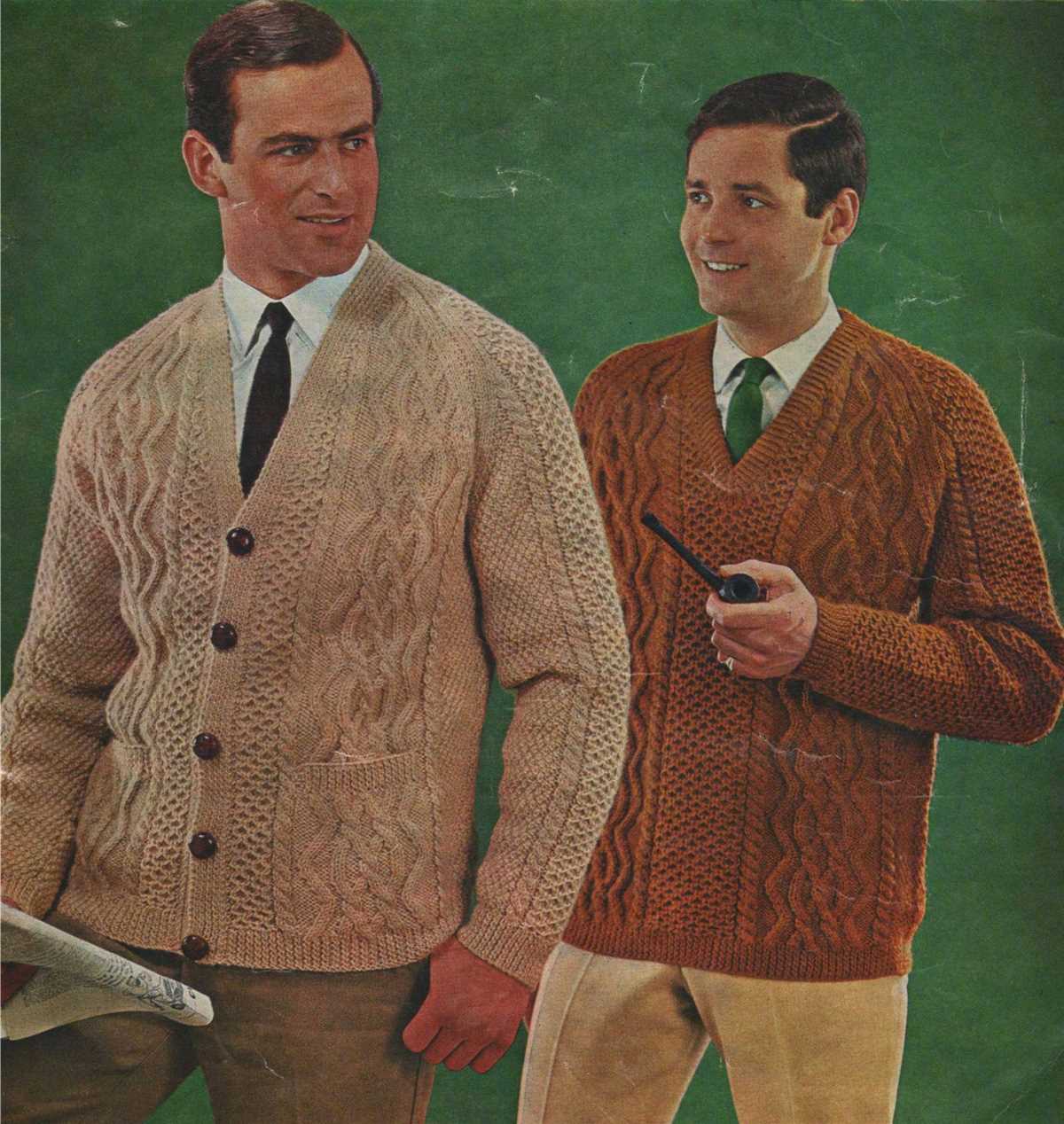
Another way to personalize your Aran jumper is through colorwork accents. You can incorporate contrasting colors into the cable patterns or add small colorwork motifs in between the cables. This can create striking visual interest and make your jumper truly one of a kind.
3. Customizing the collar:
The collar of an Aran jumper is often a focal point of the design. Consider customizing the collar by adding a contrasting color or a different stitch pattern. You can opt for a smaller or larger collar, depending on your preference, or even experiment with different collar styles, such as a turtleneck or a keyhole opening.
4. Length adjustments:
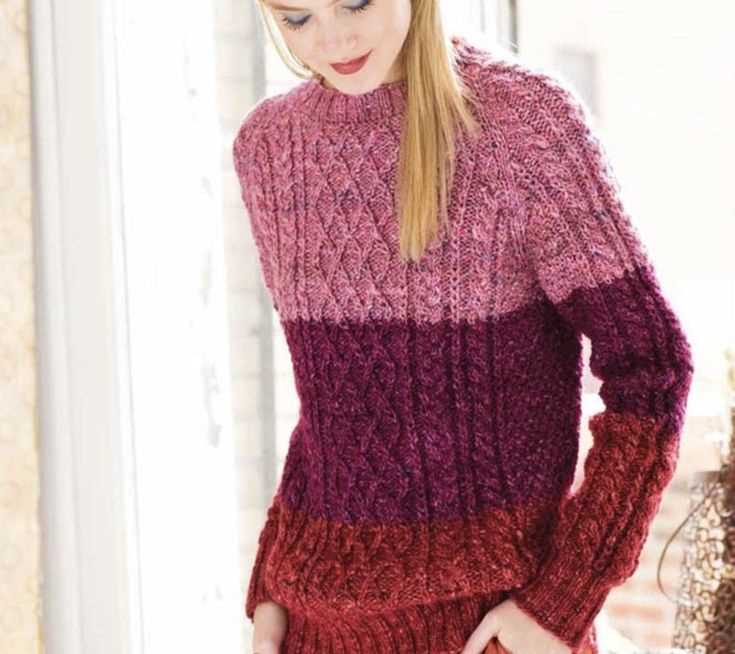
If you prefer a shorter or longer jumper, feel free to adjust the length to suit your style. You can make a cropped Aran jumper to pair with high-waisted jeans or a longer one for added warmth and coziness. Just be sure to adjust the pattern accordingly and calculate the number of stitches and rows needed for your desired length.
5. Embellishments:
Add some extra flair to your Aran jumper with embellishments like buttons, patches, or embroidery. Whether you choose to sew on vintage buttons for a retro look or embroider delicate flowers along the neckline, these small details can make a big impact and make your jumper truly unique.
Remember, the beauty of knitting is the ability to personalize and experiment. Don’t be afraid to try out different modifications and embellishments to create an Aran jumper that reflects your personal style and creativity.
Get Creative with Unique Embellishments and Modifications for Your Aran Jumper
When it comes to knitting your own Aran jumper, the possibilities for creativity and personalization are endless. While the traditional Aran sweater features intricate cables and textured stitches, you can take your design to new heights by adding unique embellishments and modifications. Whether you want to add a pop of color, incorporate different stitch patterns, or personalize it with embroidery, there are countless ways to make your Aran jumper truly one-of-a-kind.
One way to add a touch of uniqueness to your Aran jumper is by incorporating different stitch patterns. While the classic Aran design is known for its cables, you can experiment with other stitch patterns like lace, bobbles, or even colorwork. By combining different stitch patterns, you can create a visually striking jumper that stands out from the traditional designs.
If you’re looking to add some color to your Aran jumper, consider using contrasting yarns for certain elements like the cuffs, collar, or even the cables. This can create a bold and eye-catching effect that adds a modern twist to the classic design. Additionally, you can also experiment with colorwork techniques such as fair isle or intarsia to create intricate patterns and motifs.
Another way to personalize your Aran jumper is by adding embellishments such as buttons, beads, or even embroidery. You can use buttons in unique shapes and colors to add a playful touch to your design. Beads can be added to create subtle sparkle or intricate patterns. Embroidery is another great option for adding a personal touch, whether it’s a monogram, a favorite motif, or a special design that holds significance to you.
Remember, the beauty of knitting your own Aran jumper is that you have the freedom to customize it to your liking. Don’t be afraid to experiment with different techniques and ideas to make your jumper truly your own. Whether it’s through unique stitch patterns, color choices, or embellishments, let your creativity shine and create a sweater that reflects your individual style.
Maintaining and caring for your Aran jumper: Cleaning and storage tips
Maintaining your Aran jumper is essential to ensure its longevity and keep it looking its best. Here are some cleaning and storage tips to help you take care of your beloved Aran jumper:
Hand washing: It is recommended to hand wash your Aran jumper to prevent any damage that may occur in a washing machine. Fill a basin with lukewarm water and add a gentle wool detergent. Gently agitate the jumper in the water, but avoid rubbing or wringing the fabric. Rinse the jumper in clean water, pressing out any excess water gently. Avoid using hot water or harsh chemicals, as they can cause the wool to shrink or become damaged.
Drying: After washing, gently reshape the Aran jumper by laying it flat on a clean towel and rolling it up to remove any excess water. Unroll the towel and lay the jumper flat on a clean, dry surface. Avoid hanging the jumper to dry, as it can stretch and lose its shape. Allow the jumper to air dry naturally, away from direct heat or sunlight.
Storage: When it comes to storing your Aran jumper, it is important to keep it in a cool, dry place. Avoid storing it in plastic bags or airtight containers, as the lack of ventilation can cause moisture build-up and potential damage to the wool. Instead, consider storing the jumper in a breathable fabric bag or wrapping it in acid-free tissue paper to protect it from dust and pests.
Regular maintenance: To keep your Aran jumper looking its best, it is recommended to brush it gently with a soft clothes brush to remove any surface lint or fuzz. Avoid using a lint roller or any harsh brushes, as they can damage the delicate wool fibers. Additionally, avoid wearing your Aran jumper for consecutive days to allow it to rest and retain its shape. If you notice any loose threads or small holes, repair them promptly to prevent further damage.
By following these cleaning and storage tips, you can ensure that your Aran jumper stays in excellent condition and can be enjoyed for years to come. Taking the time to properly care for your jumper will not only maintain its appearance but also help it retain its warmth and comfort.
Tips and Tricks to Keep Your Aran Jumper Looking its Best for Years to Come
Now that you’ve completed your beautiful Aran jumper, it’s important to take steps to keep it looking its best for years to come. Here are some tips and tricks to help you maintain the quality and appearance of your jumper:
1. Washing:
- Hand wash your Aran jumper in cold water using a gentle detergent.
- Avoid wringing or twisting the jumper to remove excess water; instead, gently squeeze out the water and lay it flat on a clean towel to dry.
- Never hang your Aran jumper to dry, as it may stretch and lose its shape.
2. Storage:
- Fold your Aran jumper carefully and store it in a drawer or on a shelf to avoid unnecessary creasing.
- Consider using mothballs or cedar blocks to protect your jumper from moth damage.
3. Pilling:
- Regularly remove any pills or fuzz from your Aran jumper using a fabric shaver or a sweater stone.
- Avoid using scissors to cut off pills, as this may result in snags or holes.
4. Repair:
- If you notice any loose threads or small holes in your Aran jumper, repair them as soon as possible to prevent further damage.
- Use a matching yarn and a small crochet hook or a needle to carefully weave in the loose threads or mend the holes.
5. Rotation:
- Rotate the wearing of your Aran jumper with other sweaters to minimize wear and tear.
- Avoid wearing your Aran jumper too frequently, especially in harsh or rough conditions.
Conclusion:
By following these tips and tricks, you can ensure that your Aran jumper remains in excellent condition for years to come. Remember to care for it gently, store it properly, and address any issues promptly to maintain its quality and appearance.